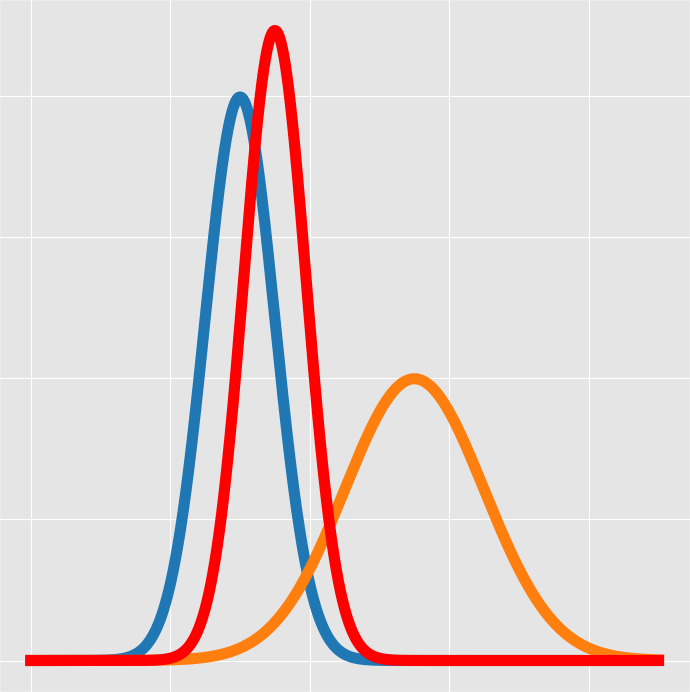Before delving into the Kalman Filter explanation, let us first understand the necessity of a tracking and prediction algorithm.
To illustrate this point, let’s take the example of a tracking radar.
Suppose we have a track cycle of 5 seconds. At intervals of 5 seconds, the radar samples the target by directing a dedicated pencil beam.
Once the radar “visits” the target, it proceeds to estimate the current position and velocity of the target. The radar also estimates (or predicts) the target’s position at the time of the next track beam.
The future target position can be easily calculated using Newton’s motion equations:
| \( x \) | is the target position |
| \( x_{0} \) | is the initial target position |
| \( v_{0} \) | is the initial target velocity |
| \( a \) | is the target acceleration |
| \( \Delta t \) | is the time interval (5 seconds in our example) |
When dealing with three dimensions, Newton’s motion equations can be expressed as a system of equations:
\[ \left\{\begin{matrix}
x= x_{0} + v_{x0} \Delta t+ \frac{1}{2}a_{x} \Delta t^{2}\\
y= y_{0} + v_{y0} \Delta t+ \frac{1}{2}a_{y} \Delta t^{2}\\
z= z_{0} + v_{z0} \Delta t+ \frac{1}{2}a_{z} \Delta t^{2}
\end{matrix}\right. \]
The set of target parameters \( \left[ x, y, z, v_{x},v_{y},v_{z},a_{x},a_{y},a_{z} \right] \) is known as the System State. The current state serves as the input for the prediction algorithm, while the algorithm’s output is the future state, which includes the target parameters for the subsequent time interval.
The system of equations mentioned above is known as a Dynamic Model or State Space Model. The dynamic model describes the relationship between the input and output of the system.
Apparently, if the target’s current state and dynamic model are known, predicting the target’s subsequent state can be easily accomplished.
In reality, the radar measurement is not entirely accurate. It contains random errors or uncertainties that can affect the accuracy of the predicted target state. The magnitude of the errors depends on various factors, such as radar calibration, beam width, and signal-to-noise ratio of the returned echo. The random errors or uncertainties in the radar measurement are known as Measurement Noise.
In addition, the target motion is not always aligned with the motion equations due to external factors like wind, air turbulence, and pilot maneuvers. This misalignment between the motion equations and the actual target motion results in an error or uncertainty in the dynamic model, which is called Process Noise.
Due to the Measurement Noise and the Process Noise, the estimated target position can be far away from the actual target position. In this case, the radar might send the track beam in the wrong direction and miss the target.
In order to improve the radar’s tracking accuracy, it is essential to employ a prediction algorithm that accounts for both process and measurement uncertainty.
The most common tracking and prediction algorithm is the Kalman Filter.

Don’t miss out on the Black Friday special!


